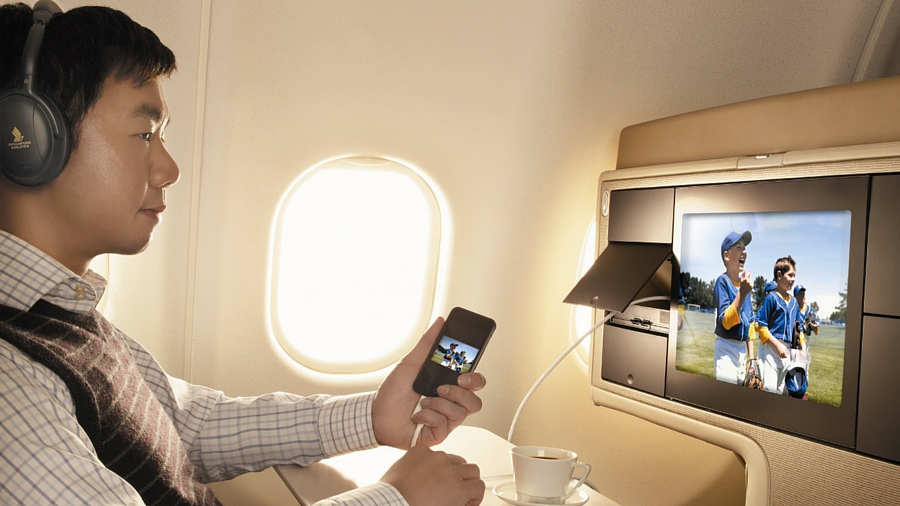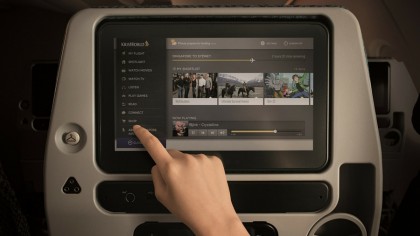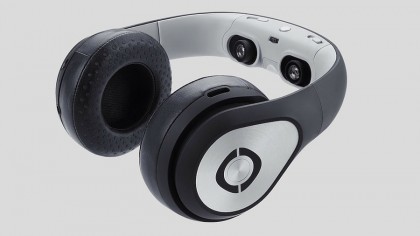The future of in-flight entertainment
In-flight entertainment is entering a turbulent time

Do you have a jet-setter's lifestyle? Airports, queues, soul-crushing hotels and hour upon hour of high altitude boredom? Lucky you. Most frequent travellers have recently abandoned the small screen in the seat in front in favour of a tablet stuffed with their own movies or catch-up TV, but that trend has only made inflight entertainment even worse.
However, things are about to change with the arrival everything from BYOD integration and pre-flight apps to movie streaming and VR.
"The days of the traditional hard-wired in-flight entertainment (IFE) systems in seat-backs and ceilings on commercial passenger jets – poor resolution, poor viewing angles and limited content – is coming to an end," says Kevin Curran, senior member IEEE & reader in computer science at Ulster University. "Many airlines are now looking into IFE on tablets, laptops and smartphones that passengers are already carrying aboard, using their devices to provide the content."

Personalised entertainment and BYOD
What if you could decide what content was available? Singapore Airlines is now offering KrisWorld, a new inflight entertainment system that comes with a companion app.
At any point before the flight you can review a list of, and even cue-up, movies and TV shows you want to watch when aboard. When you get to your seat, the app works as a remote control, but also as a second screen for reading a digital version of the inflight magazine, or watching the moving route map.
The days of the traditional hard-wired in-flight entertainment (IFE) systems in seat-backs and ceilings on commercial passenger jets is coming to an end.
"Personalisation will be the one of the key trends in the inflight experience," says Paul Margis, President and Chief Executive Officer of Panasonic Avionics, which created the system for Singapore Airlines.
Sign up for breaking news, reviews, opinion, top tech deals, and more.
For now, the app only works on the airlines' business class cabin on its A380 and B777-300ER aircraft, but Panasonic Avionics also powers an app-based service for Air Canada Rouge, via which passengers can stream movies to a personal tablet via WiFi.
"BYOD will become more prominent in in-flight entertainment, and there will be more of a focus on content over equipment; you will be able to select which entertainment you want to view via an onboard web portal, and then able to download this content to view on your own device," says Joakim Everstin, head of innovation at travel technology firm Sabre.
"Lufthansa, Virgin Australia, El Al AirlinesSystems and others, are moving towards onboard servers installed inside a jet's electronics bay and linked to several wireless access points, mounted in the aircraft's ceiling," says Curran. "These can transmit customised entertainment that fits passenger requests on their personal devices via an app."
It's not just for tablets and phones; devices like the Avegant Glyph headset, which offers viewers a private multimedia experience, could catch-on, as could other kinds of headsets.

High altitude immersion
An aircraft cabin is possibly the best place for pure escapism and to create an illusion of space. Cue virtual reality (VR).
"As the price of producing VR content comes down, we could also see VR being introduced more into the in-flight experience," says Everstin. "VR headsets could be used by airlines as a retail tool to offer people immersive experiences from their airlines and partner travel companies."
VR headsets could be used by airlines as a retail tool to offer people immersive experiences from their airlines and partner travel companies.
Want to see what the business class cabin is like before you book, and see how much legroom there is? Put on your Oculas Rift for a 360-degree video. Put a headset in the seat pocket and the same could happen for hotels and resorts (it's already happening at Shangri-La and Jumeirah hotels), and anything else we could theoretically purchase during a long flight, such as excursions, tours and restaurants in the destination.
- 1
- 2
Current page: The future of in-flight entertainment
Next Page Ubiquitous Wi-Fi and connected cabins
Jamie is a freelance tech, travel and space journalist based in the UK. He’s been writing regularly for Techradar since it was launched in 2008 and also writes regularly for Forbes, The Telegraph, the South China Morning Post, Sky & Telescope and the Sky At Night magazine as well as other Future titles T3, Digital Camera World, All About Space and Space.com. He also edits two of his own websites, TravGear.com and WhenIsTheNextEclipse.com that reflect his obsession with travel gear and solar eclipse travel. He is the author of A Stargazing Program For Beginners (Springer, 2015),